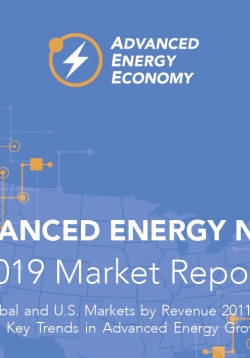
The Advanced Energy Now 2019 Market Report is the sixth report of market size, by revenue, of the advanced energy industry, worldwide and in the United States.

The Advanced Energy Now 2019 Market Report is the sixth report of market size, by revenue, of the advanced energy industry, worldwide and in the United States.
In this lesson students will further explore their understanding of energy, electricity, and basic circuits. Students will begin their exploration of batteries by questioning where batteries end up when we are done using them, making connections to e-waste...
As students begin to look at the role photovoltaics might play within the transportation energy sector, it is important for them to understand why the phasing-out of fossil fuels is such a daunting task. This lesson is designed to help students comprehend...
During this introduction lesson series students will explore the guiding phenomenon to understand e-waste and connect it to battery design. Students will utilize online resources to learn about problems from e-waste around the world and the environmental...
Students completing this lesson will already have identified some of the problems inherent in the development of ideas to replace fossil fuels in the transportation sector. Students will now conduct some research to identify some of the pros and cons of...
In this lesson students will experiment with everyday household items to make batteries. Students will use lemons, potatoes, pennies, and cola to make batteries, and compare the amount of voltage produced. These lessons can be expanded to test a variety of...
In this lesson, students will begin to explore the potential and challenges related to using photovoltaics to supplement the power needed to charge batteries in BEVs. Students will test a variety of wiring options related to series and parallel wiring....
After working through Lessons 1 and 2 of this Unit, students are now familiar with the physics of how generators work. The next step in Lesson 3 is to investigate how existing power generation systems operate and supply electricity to entire geographic...
This lesson plan will engage students in a design process to power a motor using a variety of energy sources. Students will compare different clean energy sources to decide which energy source will complete their design goal. Students will experiment with...
In this lesson, students will further explore the potential and challenges related to using photovoltaics to supplement the power needed to charge batteries in BEVs. Students will be provided with a 12 V lead-acid battery and several 3 V, 1.5 A solar...
Bonneville Environmental Foundation
1500 SW 1st Avenue, Suite 710
Portland OR 97201
phone: 503-248-1905